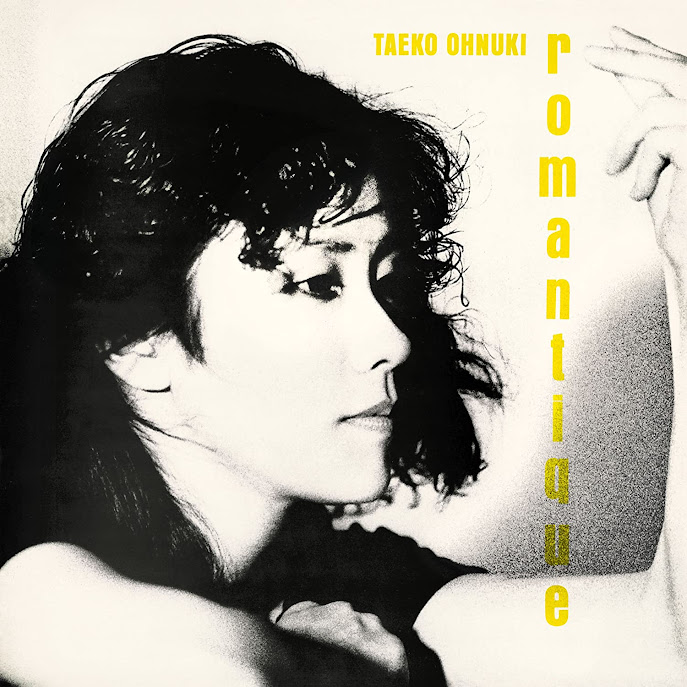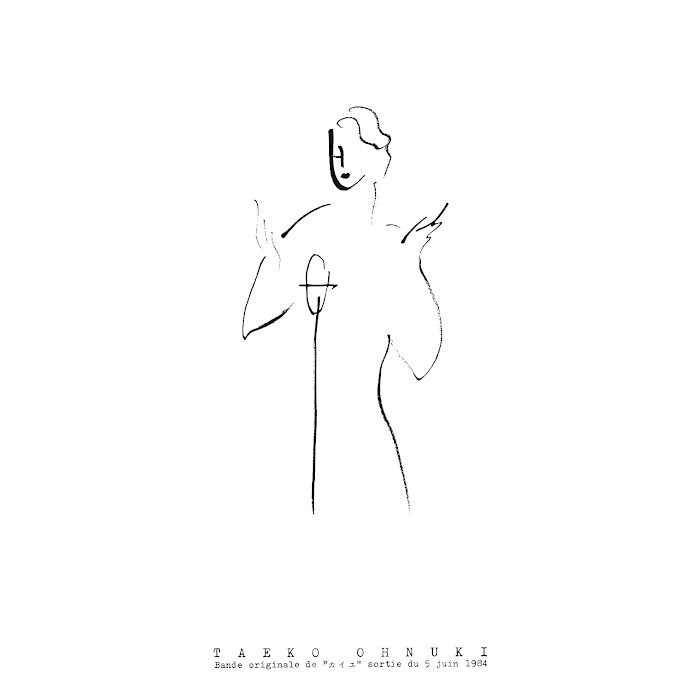Velvetmotel's Guide To Taeko Ohnuki's Music
Taeko Ohnuki is a national treasure. As far as music is concerned, she was one of the pioneers of the "New music" movement in the 1970s, and spearheaded Japanese synth-pop in the 1980s.
But with an illustrious discography, getting into her music may seem daunting. Ohnuki's explored every inch of pop music, escaping the conventions in her native Japan and seeking sonic refuge in the West.
Remerging from her hiatus in 1980, Ohnuki teamed up with her old producer Ryuichi Sakamoto for her next effort, Romantique. Romantique marked a new era for Ohnuki in two ways; for one, her new musical direction called for synthesisers and drum machines as opposed to session musicians. Romantique also suggested a blurring of lines between Japan and Europe with tracks like 'Bohemian'. While the European-esque themes are not slathered throughout the record, it nonetheless planted the seed for Taeko's exploration into European-style city pop.
But with an illustrious discography, getting into her music may seem daunting. Ohnuki's explored every inch of pop music, escaping the conventions in her native Japan and seeking sonic refuge in the West.
1975 - 1978: Fusion-era Taeko Ohnuki
Grey Skies (1975)
Breaking free from Sugar Babe, Ohnuki brought the band's jazz fusion sound with her on her first two albums recorded for Panam (Nippon Crown): Grey Skies (1975), and Sunshower (1977).
Grey Skies sees Ryuichi Sakamoto taking on production duties, as well as contributions from Haruomi Hosono on bass, Hiroshi Sato on keyboards, and Shigeru Suzuki on guitar. Essentially, the 'who's-who' in Japanese music.
Grey Skies bears a strikingly similar sound to Sugar Babe's debut album - pop-rock with lilting melodies and tight, fun arrangements. Ohnuki sounds more comfortable in her lower register here, when compared to her later efforts. While not remarkable, it's still an enjoyable listen.
Sunshower (1977)
Sunshower is another album altogether. Working with the same musicians from Grey Skies, Ohnuki brings in drummer Christopher Parker (of Stuff fame). The album's energetic, fusion sound is a breath of fresh air, with Ohnuki singing effortlessly in her upper register.
Sunshower is widely considered to be Ohnuki's masterpiece by many. After an American tourist appeared on a Japanese TV programme in search of the album (and managed to find it), many began to discover the rarity of Sunshower, and it's enduring quality. So much so, that prices for original pressings (GW-4029) have skyrocketed. Thankfully, there's a reissue for everyone to enjoy. And if you don't have a turntable, Ohnuki's on Spotify.
By the time Sunshower was released, Taeko changed labels and went on to sign with RVC Corporation. Now with a bigger budget, her 1978 album Mignonne had all the bells and whistles.
Mignonne (1978)
Grand horn and string arrangements, saccharine synthesisers makes Mignonne a very enjoyable listen. The larger budget also meant gave Mignonne a more polished, gleaming sound. The penultimate album in her fusion era, Mignonne saw Ohnuki heading into a more urban, sophisticated sound.
However, Ohnuki wasn't happy.
"I ended up feeling sick of the process. Part of that was because I changed record labels, and they really wanted to sell this album. Before I could do whatever I wanted to do. But with Mignonne, the producer wanted to change things. That was new for me."
The sales-driven direction of Mignonne robbed Ohnuki of her creative freedom. She succumbed to the pressure, and took a two-year hiatus from recording music.
1980 - 1984: The European Years
Romantique (1980)
Aventure (1981)
Aventure in 1981 continues Ohnuki's exploration into European-tinged city pop. Songs like 'Samba de mar' and 'La mer, la ciel' evoke a sense of Parisian class and exoticism, with the former moving Taeko slightly to Techno-kayo territory with dystopian synthesisers and samba rhythms - it truly sounds like Gal Costa filtered through a Japanese lens.
It's worth nothing that during this period, fellow singer EPO sang backing vocals for Ohnuki's RCA albums - while it's not as obvious on Aventure, 1982's Cliché allows us to hear her contributions better.
Cliché (1982)
Part recorded in Europe, part recorded in Japan, 1982's Cliché finds Ohnuki coming full circle with her Parisian exploration. There's a tinge of sadness, slight undercurrent of optimism and determination from her as she sings to Ryuichi Sakamoto's arrangements. Sakamoto is joined here by arranger Jean Musy, who was famous for his work with esteemed composer Francis Lai.
The half-half nature of Cliché is a refreshing listen - while tracks such as 'Kuro no Claire', 'Shikisai Tohshi' are standout tracks, I'd highlight two that are of prime importance. 'Peter Rabbit To Watashi' was instrumental for Ohnuki, as it foreshadowed her later career in composing and recording children's music. 'Labyrinth' is the definite standout here, as it's one of the best side-project tracks that Ryuichi Sakamoto recorded during this period. The world-music-esque percussion and Ohnuki's ethereal vocals make for an especially convincing listen - place 'Labyrinth' on one of Sakamoto's MIDI/School records from the era and you wouldn't think twice.
Signifie (1983)
1983's Signifie is another good effort from Ohnuki and frequent collaborator Ryuichi Sakamoto. The quirky pop continues here, but the efforts are largely recorded in Japan. Signifie was also the first album Ohnuki recorded under RVC Corporation's new imprint, Dear Heart.
カイエ - Bande Originale De "カイエ" Sortie Du 5 Juin 1984 (1984)
Ohnuki's European era comes full circle with her 1984 album, 'Cahier'. Recorded as the soundtrack for a NHK documentary, Ohnuki pretty much ditches her previous synthesisers for a full orchestra. Ohnuki also takes another leap forward - she sings in French on the melancholic 'Amour levant'. It's an injustice to talk about Cahier without mentioning the documentary film that soundtracked it. The forty-minute long monochrome film has no dialogue, only tracks from Cahier. We see Parisian night scenes, pillow shots and Taeko herself in some scenes. It's a French new wave movie that never saw the light of day.
While Cahier doesn't get as much attention as her other albums, it's still one of my favourites from her discography. No doubt - it's an outlier in her body of work, but it's a rewarding listen from start to finish. And for Taeko Ohnuki, it's a fitting end to her aural voyage across Europe.









Comments
Post a Comment